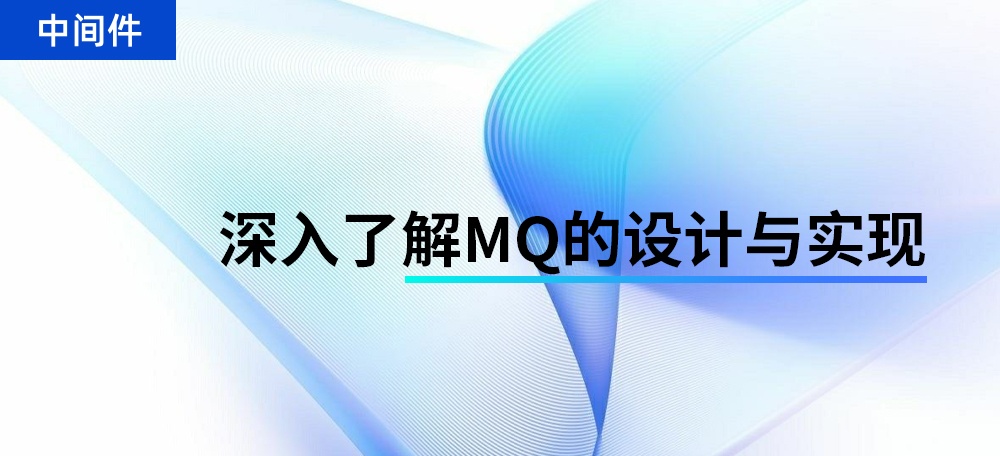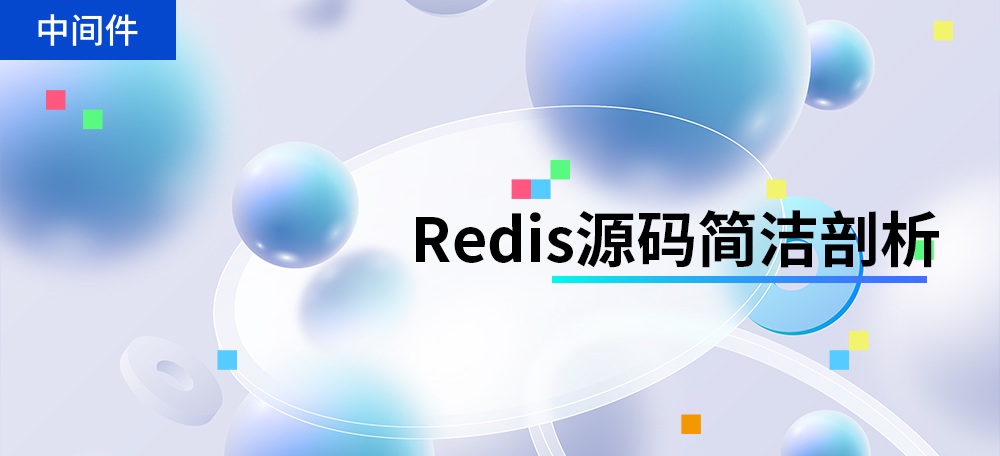闪电侠Netty源码分析及实战分享专题
Netty源码分析之新连接接入
专题正文:
通过本篇,你会了解到
1.netty如何接受新的请求
2.netty如何给新请求分配reactor线程
3.netty如何给每个新连接增加ChannelHandler
其实,远不止这些~
前序背景
读这篇文章之前,最好掌握一些前序知识,包括netty中的reactor线程,以及服务端启动过程
下面我带你简单地回顾一下
1.netty中的reactor线程
netty中最核心的东西莫过于两种类型的reactor线程,可以看作netty中两种类型的发动机,驱动着netty整个框架的运转
一种类型的reactor线程是boos线程组,专门用来接受新的连接,然后封装成channel对象扔给worker线程组;还有一种类型的reactor线程是worker线程组,专门用来处理连接的读写
不管是boos线程还是worker线程,所做的事情均分为以下三个步骤
- 轮询注册在selector上的IO事件
- 处理IO事件
- 执行异步task
对于boos线程来说,第一步轮询出来的基本都是 accept 事件,表示有新的连接,而worker线程轮询出来的基本都是read/write事件,表示网络的读写事件
2.服务端启动
服务端启动过程是在用户线程中开启,第一次添加异步任务的时候启动boos线程被启动,netty将处理新连接的过程封装成一个channel,对应的pipeline会按顺序处理新建立的连接(关于pipeline我后面会开篇详细分析)
了解完两个背景,我们开始进入正题
新连接的建立
简单来说,新连接的建立可以分为三个步骤
1.检测到有新的连接
2.将新的连接注册到worker线程组
3.注册新连接的读事件
下面带你庖丁解牛,一步步分析整个过程
检测到有新连接进入
我们已经知道,当服务端绑启动之后,服务端的channel已经注册到boos reactor线程中,reactor不断检测有新的事件,直到检测出有accept事件发生
NioEventLoop.java
private void processSelectedKey(SelectionKey k, AbstractNioChannel ch) {
final AbstractNioChannel.NioUnsafe unsafe = ch.unsafe();
int readyOps = k.readyOps();
if ((readyOps & (SelectionKey.OP_READ | SelectionKey.OP_ACCEPT)) != 0 || readyOps == 0) {
unsafe.read();
}
}
上面这段代码是reactor线程三部曲中的第二部曲,表示boos reactor线程已经轮询到 SelectionKey.OP_ACCEPT 事件,说明有新的连接进入,此时将调用channel的 unsafe来进行实际的操作
关于 unsafe,这篇文章我不打算细讲,下面是netty作者对于unsafe的解释
Unsafe operations that should never be called from user-code. These methods are only provided to implement the actual transport.
你只需要了解一个大概的概念,就是所有的channel底层都会有一个与unsafe绑定,每种类型的channel实际的操作都由unsafe来实现
而从上一篇文章,服务端的启动过程中,我们已经知道,服务端对应的channel的unsafe是 NioMessageUnsafe,那么,我们进入到它的read方法,进入新连接处理的第二步
注册到reactor线程
NioMessageUnsafe.java
private final List<Object> readBuf = new ArrayList<Object>();
public void read() {
assert eventLoop().inEventLoop();
final ChannelPipeline pipeline = pipeline();
final RecvByteBufAllocator.Handle allocHandle = unsafe().recvBufAllocHandle();
do {
int localRead = doReadMessages(readBuf);
if (localRead == 0) {
break;
}
if (localRead < 0) {
closed = true;
break;
}
} while (allocHandle.continueReading());
int size = readBuf.size();
for (int i = 0; i < size; i ++) {
pipeline.fireChannelRead(readBuf.get(i));
}
readBuf.clear();
pipeline.fireChannelReadComplete();
}
我省去了非关键部分的代码,可以看到,一上来,就用一条断言确定该read方法必须是reactor线程调用,然后拿到channel对应的pipeline和 RecvByteBufAllocator.Handle(先不解释)
接下来,调用 doReadMessages 方法不断地读取消息,用 readBuf 作为容器,这里,其实可以猜到读取的是一个个连接,然后调用 pipeline.fireChannelRead(),将每条新连接经过一层服务端channel的洗礼
之后清理容器,触发 pipeline.fireChannelReadComplete(),整个过程清晰明了,不含一丝杂质,下面我们具体看下这两个方法
1.doReadMessages(List)
2.pipeline.fireChannelRead(NioSocketChannel)
1.doReadMessages()
protected int doReadMessages(List<Object> buf) throws Exception {
SocketChannel ch = javaChannel().accept();
try {
if (ch != null) {
buf.add(new NioSocketChannel(this, ch));
return 1;
}
} catch (Throwable t) {
logger.warn("Failed to create a new channel from an accepted socket.", t);
try {
ch.close();
} catch (Throwable t2) {
logger.warn("Failed to close a socket.", t2);
}
}
return 0;
}
我们终于窥探到netty调用jdk底层nio的边界 javaChannel().accept();,由于netty中reactor线程第一步就扫描到有accept事件发生,因此,这里的accept方法是立即返回的,返回jdk底层nio创建的一条channel
netty将jdk的 SocketChannel 封装成自定义的 NioSocketChannel,加入到list里面,这样外层就可以遍历该list,做后续处理
从上篇文章中,我们已经知道服务端的创建过程中会创建netty中一系列的核心组件,包括pipeline,unsafe等等,那么,接受一条新连接的时候是否也会创建这一系列的组件呢?
带着这个疑问,我们跟进去
NioSocketChannel.java
public NioSocketChannel(Channel parent, SocketChannel socket) {
super(parent, socket);
config = new NioSocketChannelConfig(this, socket.socket());
}
我们重点分析 super(parent, socket),config相关的分析我们放到后面的文章中
NioSocketChannel的父类为 AbstractNioByteChannel
AbstractNioByteChannel.java
protected AbstractNioByteChannel(Channel parent, SelectableChannel ch) {
super(parent, ch, SelectionKey.OP_READ);
}
这里,我们看到jdk nio里面熟悉的影子—— SelectionKey.OP_READ,一般在原生的jdk nio编程中,也会注册这样一个事件,表示对channel的读感兴趣
我们继续往上,追踪到AbstractNioByteChannel的父类 AbstractNioChannel, 这里,我相信读了上篇文章的你对于这部分代码肯定是有印象的
protected AbstractNioChannel(Channel parent, SelectableChannel ch, int readInterestOp) {
super(parent);
this.ch = ch;
this.readInterestOp = readInterestOp;
try {
ch.configureBlocking(false);
} catch (IOException e) {
try {
ch.close();
} catch (IOException e2) {
if (logger.isWarnEnabled()) {
logger.warn(
"Failed to close a partially initialized socket.", e2);
}
}
throw new ChannelException("Failed to enter non-blocking mode.", e);
}
}
在创建服务端channel的时候,最终也会进入到这个方法,super(parent), 便是在AbstractChannel中创建一系列和该channel绑定的组件,如下
protected AbstractChannel(Channel parent) {
this.parent = parent;
id = newId();
unsafe = newUnsafe();
pipeline = newChannelPipeline();
}
而这里的 readInterestOp 表示该channel关心的事件是 SelectionKey.OP_READ,后续会将该事件注册到selector,之后设置该通道为非阻塞模式
到了这里,我终于可以将netty里面最常用的channel的结构图放给你看

这里的继承关系有所简化,当前,我们只需要了解这么多。
首先
1.channel 继承 Comparable 表示channel是一个可以比较的对象
2.channel 继承AttributeMap表示channel是可以绑定属性的对象,在用户代码中,我们经常使用channel.attr(...)方法就是来源于此
3.ChannelOutboundInvoker是4.1.x版本新加的抽象,表示一条channel可以进行的操作
4.DefaultAttributeMap用于AttributeMap抽象的默认方法,后面channel继承了直接使用
5.AbstractChannel用于实现channel的大部分方法,其中我们最熟悉的就是其构造函数中,创建出一条channel的基本组件
6.AbstractNioChannel基于AbstractChannel做了nio相关的一些操作,保存jdk底层的 SelectableChannel,并且在构造函数中设置channel为非阻塞
7.最后,就是两大channel,NioServerSocketChannel,NioSocketChannel对应着服务端接受新连接过程和新连接读写过程
读到这,关于channel的整体框架你基本已经了解了一大半了
好了,让我们退栈,继续之前的源码分析,在创建出一条 NioSocketChannel之后,放置在List容器里面之后,就开始进行下一步操作
2.pipeline.fireChannelRead(NioSocketChannel)
AbstractNioMessageChannel.java
pipeline.fireChannelRead(NioSocketChannel);
在没有正式介绍pipeline之前,请让我简单介绍一下pipeline这个组件
在netty的各种类型的channel中,都会包含一个pipeline,字面意思是管道,我们可以理解为一条流水线工艺,流水线工艺有起点,有结束,中间还有各种各样的流水线关卡,一件物品,在流水线起点开始处理,经过各个流水线关卡的加工,最终到流水线结束
对应到netty里面,流水线的开始就是HeadContxt,流水线的结束就是TailConext,HeadContxt中调用Unsafe做具体的操作,TailConext中用于向用户抛出pipeline中未处理异常以及对未处理消息的警告,关于pipeline的具体分析我们后面再详细探讨
通过前面一篇文章,我们已经知道在服务端处理新连接的pipeline中,已经自动添加了一个pipeline处理器 ServerBootstrapAcceptor, 并已经将用户代码中设置的一系列的参数传入了构造函数,接下来,我们就来看下ServerBootstrapAcceptor
ServerBootstrapAcceptor.java
private static class ServerBootstrapAcceptor extends ChannelInboundHandlerAdapter {
private final EventLoopGroup childGroup;
private final ChannelHandler childHandler;
private final Entry<ChannelOption<?>, Object>[] childOptions;
private final Entry<AttributeKey<?>, Object>[] childAttrs;
ServerBootstrapAcceptor(
EventLoopGroup childGroup, ChannelHandler childHandler,
Entry<ChannelOption<?>, Object>[] childOptions, Entry<AttributeKey<?>, Object>[] childAttrs) {
this.childGroup = childGroup;
this.childHandler = childHandler;
this.childOptions = childOptions;
this.childAttrs = childAttrs;
}
public void channelRead(ChannelHandlerContext ctx, Object msg) {
final Channel child = (Channel) msg;
child.pipeline().addLast(childHandler);
for (Entry<ChannelOption<?>, Object> e: childOptions) {
try {
if (!child.config().setOption((ChannelOption<Object>) e.getKey(), e.getValue())) {
logger.warn("Unknown channel option: " + e);
}
} catch (Throwable t) {
logger.warn("Failed to set a channel option: " + child, t);
}
}
for (Entry<AttributeKey<?>, Object> e: childAttrs) {
child.attr((AttributeKey<Object>) e.getKey()).set(e.getValue());
}
try {
childGroup.register(child).addListener(new ChannelFutureListener() {
@Override
public void operationComplete(ChannelFuture future) throws Exception {
if (!future.isSuccess()) {
forceClose(child, future.cause());
}
}
});
} catch (Throwable t) {
forceClose(child, t);
}
}
前面的 pipeline.fireChannelRead(NioSocketChannel); 最终通过head->unsafe->ServerBootstrapAcceptor的调用链,调用到这里的 ServerBootstrapAcceptor 的channelRead方法
而 channelRead 一上来就把这里的msg强制转换为 Channel, 为什么这里可以强制转换?读者可以思考一下
然后,拿到该channel,也就是我们之前new出来的 NioSocketChannel对应的pipeline,将用户代码中的 childHandler,添加到pipeline,这里的 childHandler 在用户代码中的体现为
ServerBootstrap b = new ServerBootstrap();
b.group(bossGroup, workerGroup)
.channel(NioServerSocketChannel.class)
.childHandler(new ChannelInitializer<SocketChannel>() {
@Override
public void initChannel(SocketChannel ch) throws Exception {
ChannelPipeline p = ch.pipeline();
p.addLast(new EchoServerHandler());
}
});
其实对应的是 ChannelInitializer,到了这里,NioSocketChannel中pipeline对应的处理器为 head->ChannelInitializer->tail,牢记,后面会再次提到!
接着,设置 NioSocketChannel 对应的 attr和option,然后进入到 childGroup.register(child),这里的childGroup就是我们在启动代码中new出来的NioEventLoopGroup,具体可以参考这篇文章
我们进入到NioEventLoopGroup的register方法,代理到其父类MultithreadEventLoopGroup
MultithreadEventLoopGroup.java
public ChannelFuture register(Channel channel) {
return next().register(channel);
}
这里又扯出来一个 next()方法,我们跟进去
MultithreadEventLoopGroup.java
@Override
public EventLoop next() {
return (EventLoop) super.next();
}
回到其父类
MultithreadEventExecutorGroup.java
@Override
public EventExecutor next() {
return chooser.next();
}
这里的chooser对应的类为 EventExecutorChooser,字面意思为事件执行器选择器,放到我们这里的上下文中的作用就是从worker reactor线程组中选择一个reactor线程
public interface EventExecutorChooserFactory {
/**
* Returns a new {@link EventExecutorChooser}.
*/
EventExecutorChooser newChooser(EventExecutor[] executors);
/**
* Chooses the next {@link EventExecutor} to use.
*/
@UnstableApi
interface EventExecutorChooser {
/**
* Returns the new {@link EventExecutor} to use.
*/
EventExecutor next();
}
}
关于chooser的具体创建我不打算展开,相信前面几篇文章中的源码阅读技巧可以帮助你找出choose的始末,这里,我直接告诉你(但是劝你还是自行分析一下,简单得很),chooser的实现有两种
public final class DefaultEventExecutorChooserFactory implements EventExecutorChooserFactory {
public static final DefaultEventExecutorChooserFactory INSTANCE = new DefaultEventExecutorChooserFactory();
private DefaultEventExecutorChooserFactory() { }
@SuppressWarnings("unchecked")
@Override
public EventExecutorChooser newChooser(EventExecutor[] executors) {
if (isPowerOfTwo(executors.length)) {
return new PowerOfTowEventExecutorChooser(executors);
} else {
return new GenericEventExecutorChooser(executors);
}
}
private static boolean isPowerOfTwo(int val) {
return (val & -val) == val;
}
private static final class PowerOfTowEventExecutorChooser implements EventExecutorChooser {
private final AtomicInteger idx = new AtomicInteger();
private final EventExecutor[] executors;
PowerOfTowEventExecutorChooser(EventExecutor[] executors) {
this.executors = executors;
}
@Override
public EventExecutor next() {
return executors[idx.getAndIncrement() & executors.length - 1];
}
}
private static final class GenericEventExecutorChooser implements EventExecutorChooser {
private final AtomicInteger idx = new AtomicInteger();
private final EventExecutor[] executors;
GenericEventExecutorChooser(EventExecutor[] executors) {
this.executors = executors;
}
@Override
public EventExecutor next() {
return executors[Math.abs(idx.getAndIncrement() % executors.length)];
}
}
}
默认情况下,chooser通过 DefaultEventExecutorChooserFactory被创建,在创建reactor线程选择器的时候,会判断reactor线程的个数,如果是2的幂,就创建PowerOfTowEventExecutorChooser,否则,创建GenericEventExecutorChooser
两种类型的选择器在选择reactor线程的时候,都是通过Round-Robin的方式选择reactor线程,唯一不同的是,PowerOfTowEventExecutorChooser是通过与运算,而GenericEventExecutorChooser是通过取余运算,与运算的效率要高于求余运算,可见,netty为了效率优化简直丧心病狂!
选择完一个reactor线程,即 NioEventLoop 之后,我们回到注册的地方
public ChannelFuture register(Channel channel) {
return next().register(channel);
}
代理到 NioEventLoop 的父类的register方法
SingleThreadEventLoop.java
@Override
public ChannelFuture register(Channel channel) {
return register(new DefaultChannelPromise(channel, this));
}
其实,这里已经和服务端启动的过程一样了,详细步骤可以参考服务端启动详解这篇文章,我们直接跳到关键环节
AbstractNioChannel.java
private void register0(ChannelPromise promise) {
boolean firstRegistration = neverRegistered;
doRegister();
neverRegistered = false;
registered = true;
pipeline.invokeHandlerAddedIfNeeded();
safeSetSuccess(promise);
pipeline.fireChannelRegistered();
if (isActive()) {
if (firstRegistration) {
pipeline.fireChannelActive();
} else if (config().isAutoRead()) {
beginRead();
}
}
}
和服务端启动过程一样,先是调用 doRegister();做真正的注册过程,如下
protected void doRegister() throws Exception {
boolean selected = false;
for (;;) {
try {
selectionKey = javaChannel().register(eventLoop().selector, 0, this);
return;
} catch (CancelledKeyException e) {
if (!selected) {
eventLoop().selectNow();
selected = true;
} else {
throw e;
}
}
}
}
将该条channel绑定到一个selector上去,一个selector被一个reactor线程使用,后续该channel的事件轮询,以及事件处理,异步task执行都是由此reactor线程来负责
绑定完reactor线程之后,调用 pipeline.invokeHandlerAddedIfNeeded()
前面我们说到,到目前为止NioSocketChannel 的pipeline中有三个处理器,head->ChannelInitializer->tail,最终会调用到 ChannelInitializer 的 handlerAdded 方法
public void handlerAdded(ChannelHandlerContext ctx) throws Exception {
if (ctx.channel().isRegistered()) {
initChannel(ctx);
}
}
handlerAdded方法调用 initChannel 方法之后,调用remove(ctx);将自身删除
AbstractNioChannel.java
private boolean initChannel(ChannelHandlerContext ctx) throws Exception {
if (initMap.putIfAbsent(ctx, Boolean.TRUE) == null) {
try {
initChannel((C) ctx.channel());
} catch (Throwable cause) {
exceptionCaught(ctx, cause);
} finally {
remove(ctx);
}
return true;
}
return false;
}
而这里的 initChannel 方法又是神马玩意?让我们回到用户方法,比如下面这段用户代码
用户代码
ServerBootstrap b = new ServerBootstrap();
b.group(bossGroup, workerGroup)
.channel(NioServerSocketChannel.class)
.option(ChannelOption.SO_BACKLOG, 100)
.handler(new LoggingHandler(LogLevel.INFO))
.childHandler(new ChannelInitializer<SocketChannel>() {
@Override
public void initChannel(SocketChannel ch) throws Exception {
ChannelPipeline p = ch.pipeline();
p.addLast(new LoggingHandler(LogLevel.INFO));
p.addLast(new EchoServerHandler());
}
});
哦,原来最终跑到我们自己的代码里去了啊!我就不解释这段代码是干嘛的了,你懂的~
完了之后,NioSocketChannel绑定的pipeline的处理器就包括 head->LoggingHandler->EchoServerHandler->tail
注册读事件
接下来,我们还剩下这些代码没有分析完
AbstractNioChannel.java
private void register0(ChannelPromise promise) {
// ..
pipeline.fireChannelRegistered();
if (isActive()) {
if (firstRegistration) {
pipeline.fireChannelActive();
} else if (config().isAutoRead()) {
beginRead();
}
}
}
pipeline.fireChannelRegistered();,其实没有干啥有意义的事情,最终无非是再调用一下业务pipeline中每个处理器的 ChannelHandlerAdded方法处理下回调
isActive()在连接已经建立的情况下返回true,所以进入方法块,进入到 pipeline.fireChannelActive();,这里的分析和netty源码分析之服务端启动全解析分析中的一样,在这里我详细步骤先省略,直接进入到关键环节
AbstractNioChannel.java
@Override
protected void doBeginRead() throws Exception {
// Channel.read() or ChannelHandlerContext.read() was called
final SelectionKey selectionKey = this.selectionKey;
if (!selectionKey.isValid()) {
return;
}
readPending = true;
final int interestOps = selectionKey.interestOps();
if ((interestOps & readInterestOp) == 0) {
selectionKey.interestOps(interestOps | readInterestOp);
}
}
你应该还记得前面 register0() 方法的时候,向selector注册的事件代码是0,而 readInterestOp对应的事件代码是 SelectionKey.OP_READ,参考前文中创建 NioSocketChannel 的过程,稍加推理,聪明的你就会知道,这里其实就是将 SelectionKey.OP_READ事件注册到selector中去,表示这条通道已经可以开始处理read事件了
总结
至此,netty中关于新连接的处理已经向你展示完了,我们做下总结
1.boos reactor线程轮询到有新的连接进入
2.通过封装jdk底层的channel创建 NioSocketChannel以及一系列的netty核心组件
3.将该条连接通过chooser,选择一条worker reactor线程绑定上去
4.注册读事件,开始新连接的读写
下篇文章将深挖netty中的核心组件 pipeline
顺便说一句:
我的新书 《跟闪电侠学 Netty》已出版。书的前半部分是掘金小册中的内容:通过一个完整的 IM 项目入门 Netty;后半部分用了较大的篇幅来介绍 Netty 的底层原理,也会穿插讲一些源码阅读的思路,希望能够帮助到你,如果阅读专题过程中有疑惑,或者想要更深一步了解,可购买深入阅读!
- 浏览更多精彩评论
- 和开发者讨论交流,共同进步








